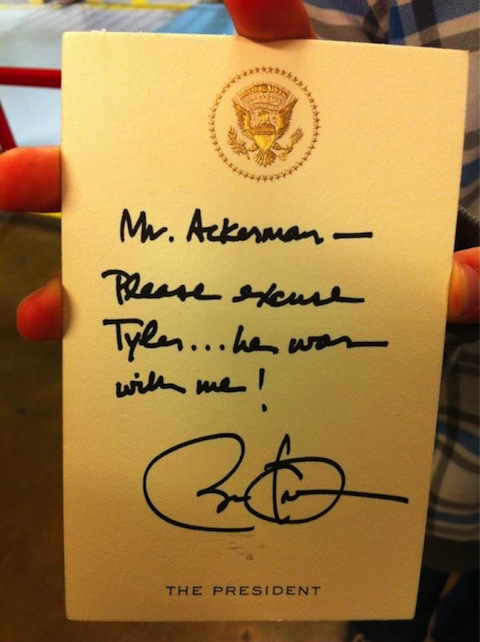Written by Jim Dalrymple
Mike Rose:
Nuance isn’t yet saying anything specific about iOS integration for Dragon ID — “We aren’t providing details yet, but we’re in discussions with several of the top OEMs,” was the word via the company’s PR rep.
As Mike said voice login isn’t new, but this could be interesting.
Written by Shawn King
The Atlantic:
Of all the noises that my children will not understand, the one that is nearest to my heart is not from a song or a television show or a jingle. It’s the sound of a modem connecting with another modem across the repurposed telephone infrastructure. It was the noise of being part of the beginning of the Internet.
Thanks to Daring Fireball for the link.
Written by Shawn King
TBWA/Chiat/Day’s Lee Clow, the advertising genius behind the “Think Different” and “1984” advertisements, sums up his relationship with Steve Jobs.
Written by Shawn King
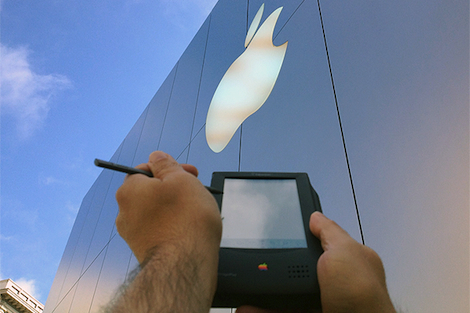 TIME:
TIME:
…In 1992, nobody had a PDA. That’s Personal Digital Assistant, in case you’ve forgotten, and even though nobody had one, lots of people were talking about them. Apple CEO John Sculley had coined the term in the keynote speech he made at the Consumer Electronics Show in Las Vegas on January 7. He announced that Apple would release PDAs–pocket-sized information devices, easier to use than a PC and selling for under $1000–in 1993.
Twenty years ago this week, on May 29, 1992, Sculley spoke again at another CES, in Chicago. This time, he didn’t just talk about PDAs. He brought one with him. It was a Newton, a prototype of the device which Apple planned to start selling in early 1993. Actually, Apple had multiple Newtons on hand that, which was good: The first one it unveiled on stage had dead batteries and didn’t work. Using a second unit, Steve Capps, one of Newton’s creators, showed how you could use it to order a pizza by moving topping icons onto a pie and then sending out a fax. In 1992, that was show-stopping stuff.
Newton’s were the must-have geek toy of the Nineties. It may not seem like it now but they were amazing for their time.
Written by Peter Cohen
Sakthi Prasad for Reuters:
TiVo Inc countersued Cisco Systems Inc in a court over alleged infringement of four patents relating to digital video recorder (DVR) technology, days after Cisco filed a lawsuit against TiVo to void those same patents.
Remember when Steve Jobs called Blu-ray a “bag of hurt?” That’s nothing compared to the legal morass DVR technology is turning out to be.
Written by Peter Cohen
Edvard Pettersson and Joel Rosenblatt for Bloomberg:
Apple Inc. (AAPL) was denied its renewed request for a ban on U.S. sales of Samsung Electronics Co.’s Galaxy Tab 10.1 tablet computer while the case is still before a federal court of appeals. U.S. District Judge Lucy Koh in San Jose, California, said yesterday that she doesn’t have jurisdiction to issue a preliminary injunction because the U.S. Court of Appeals for the Federal Circuit in Washington hasn’t issued a mandate yet. The judge said Apple can renew its request once the court in Washington issues its ruling.
Written by Jim Dalrymple
Dain Miller takes a look at the differences and misconceptions of UI and UX.
The popularity of Apple’s iPad shows no signs of slowing down, according to a recent survey by market research firm ChangeWave.
According to the firm’s May survey of 2,893 consumers, the iPad is still the tablet that an overwhelming majority of consumers plan to purchase. Of the respondents that plan to purchase a tablet in the next 90 days, 73 percent said they would buy an iPad.
The next closest competitor is the Amazon Kindle Fire with 8 percent intent to purchase and Samsung with 6 percent intent to purchase. No other company registered more than 3 percent of intent to purchase, according to ChangeWave.
The survey also noted the diminishing strength of the Kindle Fire after its initial release and surge.
June 4, 2012
Written by Jim Dalrymple
Congrats to Marco on broadening the market for an app I use everyday on iOS and my Mac.
Written by Jim Dalrymple
Shawn King and Macworld’s Lex Friedman talk about Mac App Store sandboxing.
Written by Shawn King
Jeremy Allaire, Founder, Chairman and CEO of Brightcove:
Apple will not anytime soon launch a competitive subscription video product to cable.(but)…the iPhone and iPad in your pocket or handbag is the next-generation TV set-top box, and it is both highly personal and highly social and capable of bringing hundreds of thousands and soon millions of rich interactive applications and experiences onto your TV set.Apple will release a new Apple TV add-on product, though I expect that rather than using the current “puck” design it will instead be a thin black bar, perhaps 1 inch tall and 3 inches wide, that can easily mount to the top of almost any existing HD capable TV set. Like the existing Apple TV, it will have HDMI and power jacks on the back, but it will also include a high-def camera built into its face, as well as an embedded iOS environment that provides motion sensing and speech processing.
Very interesting analysis and, I believe, almost exactly the way Apple’s future on your television will be.
Written by Jim Dalrymple
Apple continued to lead the market with nearly 65% of worldwide units and surpassed 67 million cumulative shipments in its first eight quarters of availability. iPad can’t claim the highest mobile broadband (3G/4G) attach rate for media tablets, though Apple retains its title of shipping the most 3G-enabled tablets by outpacing the number two competitor by a factor of eight.
The battle is for second place.
Written by Jim Dalrymple
Horace Dediu:
The concern has to be that rather than seeing the net adds growing–as they have for two years with only two contiguous months of decline–Android net adds have been falling for four months.
iOS held steady and that’s just with the iPhone. Imagine the growth if they included the iPad.
Written by Jim Dalrymple
Headed to WWDC next week? Leave your business cards at home for shimming tables. Take Meechu with you on your iPhone and connect to all the cool people you meet quickly and easily.
When you meet someone, open Meechu and tap the broadcast button. Anyone else running Meechu will automatically exchange information with you. There’s no ceremony, no extra services to sign up for. It’s quick, easy and simple.
Meechu is on sale for $1.99 in the App Store through the end of WWDC.
Written by Jim Dalrymple
The latest comic from Nitrozac and Snaggy at The Joy of Tech.
June 3, 2012
Written by Jim Dalrymple
This looks kind of cool. It’s on kickstarter with only four hours left and they currently need $400 to meet the goal for the project.
June 2, 2012
Written by Shawn King
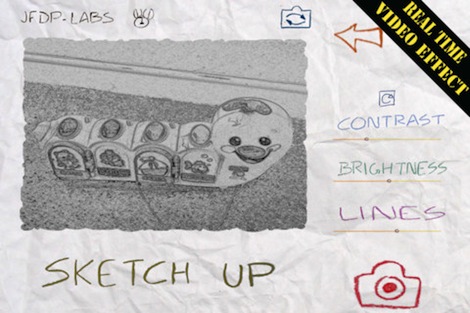 I have a confession to make – I’m a iOS photography app junkie. Show me an app that has even a little bit of cool to it, and I’ll drop a few bucks on it in a heartbeat. Consequently, I have a couple hundred photography apps!
I have a confession to make – I’m a iOS photography app junkie. Show me an app that has even a little bit of cool to it, and I’ll drop a few bucks on it in a heartbeat. Consequently, I have a couple hundred photography apps!
A downside to many apps is you have to take a picture first and then run various filters on the app, never knowing exactly whether or not the filter is suitable for the image or vice versa. Thanks to David Chartier, I found a new app this morning that solves that issue – it runs filters on a live image!
It’s called Paper Camera. It’s really clever and original and I highly recommend it.
(As Erik Veland points out in the comments, “You know Instagram also runs filters on a live image, right? As does Path.” I did not know that. Thanks for the addition/correction)
Written by Peter Cohen
Matthew Panzarino for The Next Web:
Jayse is a freelance visual artist working remotely from Las Vegas, NV for film and television. He has built a solid reputation in the industry as a creative-art director for print, web and motion design with clients ranging from Symantec to MTV and Fox. His latest work has been in the niche area of fictional UI and data design for feature films like 2012, Rise of the Planet of the Apes and The Avengers. For The Avengers, Jayse worked on the heads up display, or HUD, that you see any time actor Robert Downey Jr’s face is inside the Iron Man helmet. He also worked on the various computers used on the bridge of the S.H.I.E.L.D. Helicarrier, its mobile command post.
There’s a method to Jayse Hansen’s designs in The Avengers involving research, consultation with an A-10 fighter pilot, and understanding the director’s intent and what the script says. Hansen also discusses his tools of the trade, which include software like Illustrator, Cinema 4D and After Effects, and hardware like a Wacom Cintiq tablet.
June 1, 2012
Written by Jim Dalrymple
MG Siegler:
My guess is that Apple will keep things simple with at least the initial Facebook/iOS integration. Beyond authentication, there will probably be a Facebook button in the existing share screen which will allow you to share something to your Facebook Wall.
Sounds like the Apple way to do it.
Imagine being RIM and your office is located on Innovation Dr.
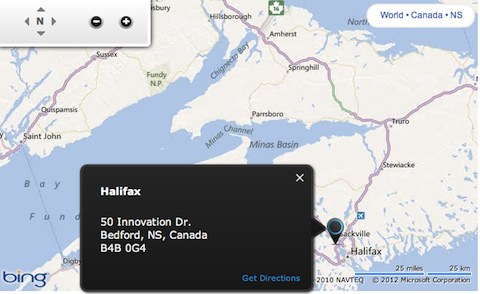
Written by Jim Dalrymple
Now this is amazing stuff. Look at all of the shapes that can be done with CSS.
Written by Shawn King
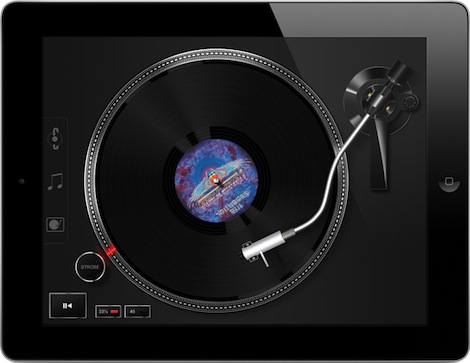
andBoom:
Vinyl Tap brings the golden age of music listening to your iPad. Beautifully re-imagined turntables allow you once again to experience music the way it was intended.
Remember the joy you felt when you pulled out that beautiful, black record from its sleeve and placed it gently on to your player, listened for that comforting crackle of the needle in the grooves as you lay back and closed your eyes? Vinyl Tap will enable you to enjoy reminiscing or have the vinyl experience for the first time using your iTunes library.
Written by Jim Dalrymple
I’d like to thank iStorage for sponsoring this week’s RSS feed on The Loop.
The ultimate file manager for iOS. Connect, browse and edit your files in the cloud.
Written by Jim Dalrymple
Clearly they are trying to outdo any announcements Apple might have at WWDC. Good luck with that.


